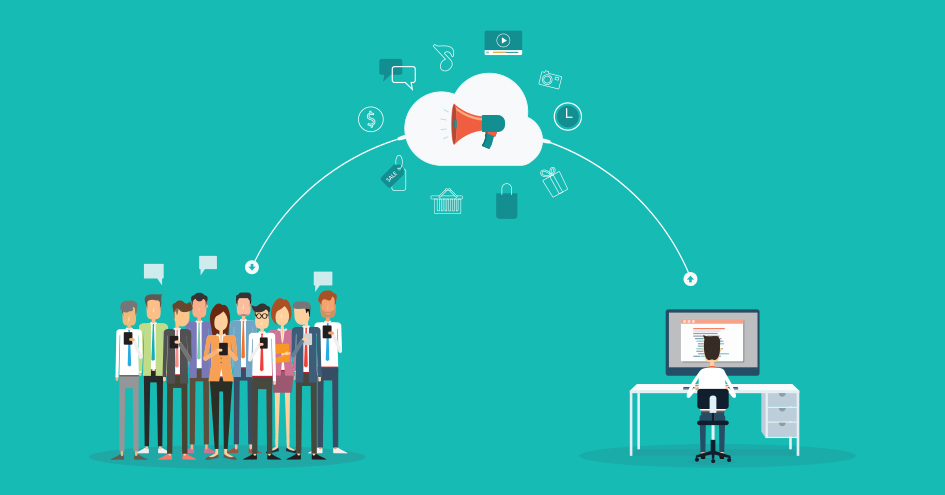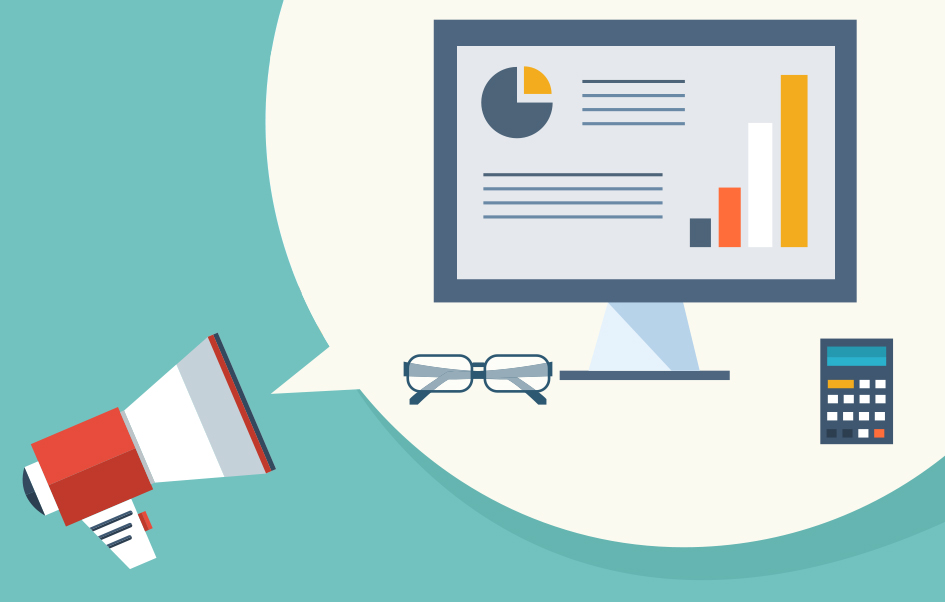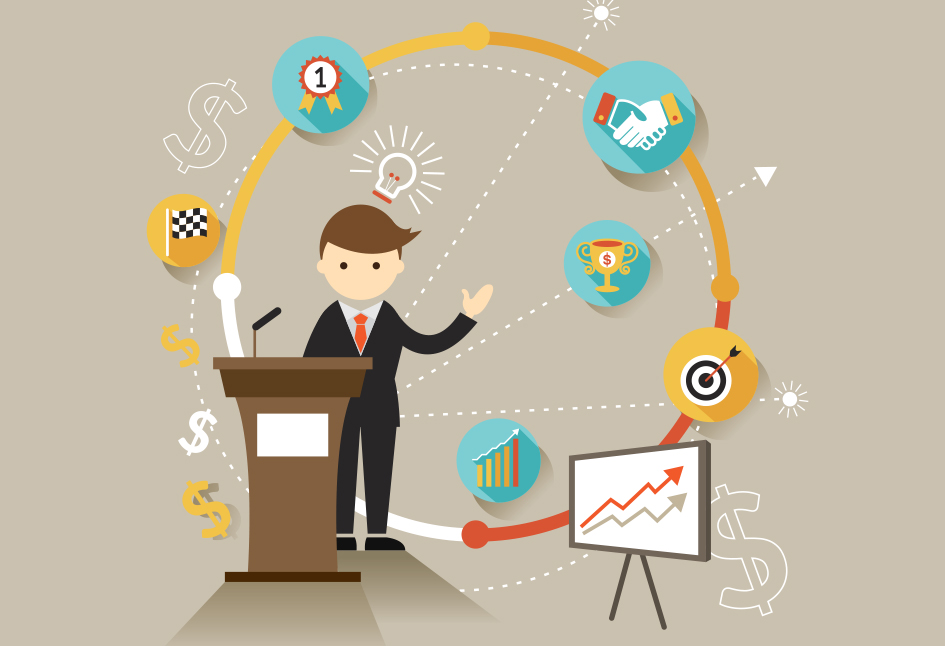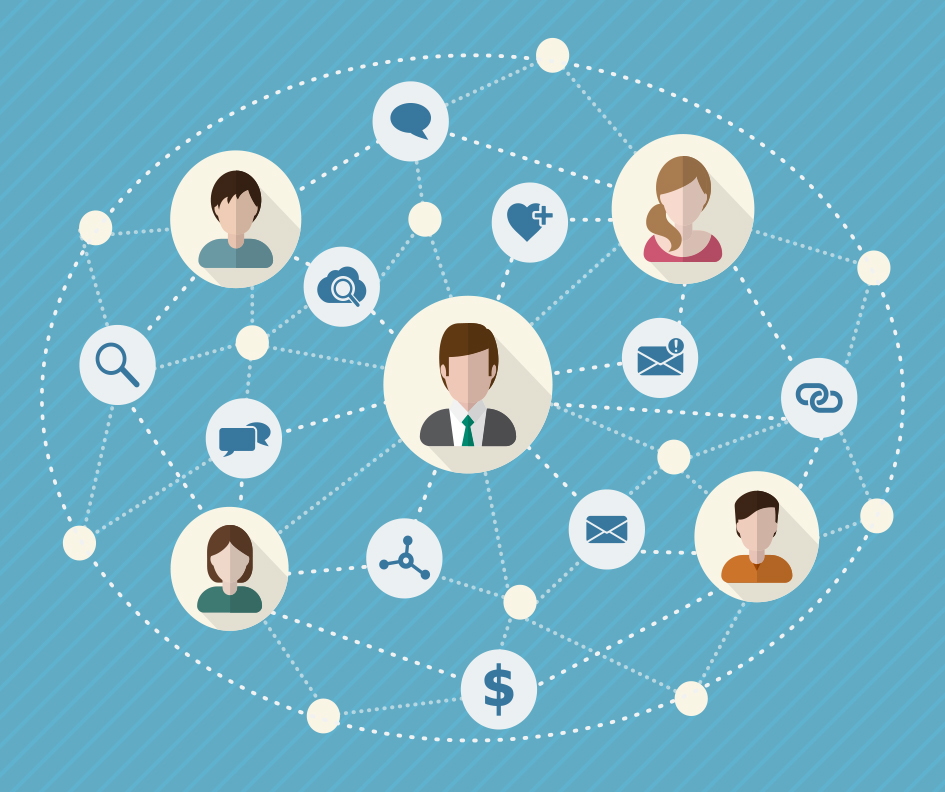by Salesforce Canada (podcast)
Marketing isn’t the same as it was a decade ago. The connections forged by the internet mean that marketers often rely on others, such as influencers, in order to shape opinions and create communities. However, influencers don’t ensure the success of influencer marketing.
In this episode of the Marketing Cloudcast, Brian Solis shares his experiences with and outlook for influencer marketing. Solis, an analyst and author, uncovers what many marketers know: Not all influencers are equal. He also shares the questions that marketers should ask their influencers as they shape a marketing campaign.
(Transcription)
Welcome to the Marketing Cloudcast. It’s the podcast where marketing leaders shoot straight about key trends, technologies, and topics in marketing today. And now, straight from the Salesforce Marketing Cloud, it’s your co-hosts, Heike Young and Joel Book.
Heike Young (HY): Hey everybody, welcome to another episode of the Marketing Cloudcast, the marketing podcast from Salesforce. I am Heike Young, and I co-host this podcast with my estimable colleague here at Salesforce, Joel Book. In every episode of this podcast, we bring you an in-depth interview with a marketing leader, somebody who really helps us think about marketing in new ways. Today’s guest definitely fits in that category. He is a popular speaker and author, and now he is bringing his research and insights to the topic of influencer marketing. Joel, set the stage for us here today.
Joel Book (JB): Well, thanks very much, Heike. Hello, everybody. Heike, great to be back with you again. Well, today, our special repeat guest — that’s right, you heard me — our special guest today is Brian Solis of Altimeter Group. Brian joined us on a previous episode of the Marketing Cloudcast which, thanks to all of you, was one of our highest-rated podcasts, which is one of the reasons why we invited Brian back.
For those of you who may not be familiar with Brian, he serves as principal analyst at the Altimeter Group. He’s a very, very well-read individual, meaning that he’s an award-winning author. In fact, when Heike and I interviewed Brian previously, he had just released his book, X: The Experience When Business Meets Design, which has become a best seller. He’s a very popular keynote speaker. So for those of you who ever have an opportunity to be in the presence of Brian at an event, do not miss it. Get a front row seat because he comes with plenty of content that is useful and very, very practical. So, without further ado, Brian, welcome back to the Marketing Cloudcast.
Brian Solis (BS): Well, it’s awesome to be back, and I just want to start by saying thank you. I really appreciated being on this show as X was launching because you helped me bring an important story to some important people. And it was a really great show. So thank you for having me on then and for having me on again.
The State of Influencer Marketing in 2017
JB: Well, it’s our pleasure. Our aim here at the podcast is to really try to put a spotlight on those individuals that are opinion shapers, who are influencers in the industry, the art and science of digital marketing. In fact, Brian, that’s a lot of what Heike and I want to speak with you about today because you are now out with new research about influencer marketing. And so what we’d like to do in our time with you today is really kind of go as deep on that topic as we can. Because this is something that a lot of the people that listen to the Marketing Cloudcast have asked us to put more emphasis on. So I guess the first question, just to kind of set the table for our discussion today: Give us your insight or overview, Brian, as to kind of the state of the state of influencer marketing today. Where is it at, and more importantly, where are we headed?
BS: All right. Well, let’s see, I’ll probably then answer that in the next 65 or 70 minutes if you have enough time [laughter].
JB: Bullet points, Brian [laughter].
BS: In 2012, I published a report called “The Rise of Digital Influence,” which, all humility aside, I hope you read. You can go onto SlideShare and download it right now for free. It’s just “The Rise of Digital Influence,” and use my name in the search bar. It was published not as a way to talk about influencer marketing per se, but to help marketers understand what influence actually is and how it works, and bringing in things like social capital, and how relationships actually work online, and how people earn and spend that social capital by what they say and what they do. And it was basically a humanities-based research report that showed us the science of it, so that smart marketers or progressive marketers could really then see what the fundamentals are or the building blocks are to run an effective influencer marketing campaign.
So to your point about where we are, and where we’re going, or what the state of influencer marketing is, I think that, unfortunately, we think about influencer marketing the same way we think about old-school public relations. And I mean that lovingly, but that is exactly what we have to process in order to think about how to do this right. We look at who are the influencers, and then we spam them, or pitch them, or broadcast them as ways of just trying to get them to help tell our story, when that’s not how influence works. And that’s certainly not why someone became an influencer. And it’s certainly not the way that they want to work simply because that’s the way you work, or that’s the way your clients think about this. And there’s a lot of education that I think we need to consider here, and this is why some of the best people in the game aren’t actually talking about what they do right. They’re not actually publishing case studies because this is a competitive advantage for them.

Building an Effective Influencer
JB: Well, that really spurs another question because I get asked this question a lot, Brian, and that is on the topic of influencers. The question is what types of individuals really are your most effective influencers? Example: I’ve had some customers here at Salesforce come up to me and say, “Well, quite frankly, Joel, my best influencers are our customers, those that are really passionate about the brand.” I’ve had other individuals say, “What works well for us is having someone like a Brian Solis, who is really well-respected in the industry, really well-versed in technology, and specifically the application of technology for digital marketing. If we could get Brian to speak about what we’re doing, we would consider that a home run.” What’s your take on that? Because I think brands struggle with this when they think about formulating an influencer marketing strategy. What types of individuals should they really be courting, if you will, or really kind of bringing them in closer to the brand to really leverage their influence?
BS: Such a great question. It’s also one of the most important questions that I don’t think people really think about when they’re putting together their influencer marketing campaigns. And I think for the most part this is why — it’s true for influencer marketing as much as it is true for basically everything that companies try to do with technology, whether it’s customer service or sales. It’s that we just try to scale existing philosophies and processes.
So in this regard, we lean too much on software. Tell me who my influencers are if I talk about cloud computing, or if my client is in cloud computing, or what have you. And so you get all these names, and then you might even sort them by reach. For example, there was one report that was flying around recently about all of the influencers about so-and-so technology. I don’t want to give it away too much because I don’t want to offend anybody, but my name was on the list. And quite honestly, I took a look at it just because I wanted to see, “Well, is this something that’s flattering to me, or is this something that’s demonstrating the problems that we have in the influencer marketing world?” And I felt it was the latter. It had me somewhere on the list, had ranked me on that list based on these ideas of what I had called the three pillars of influence: reach, resonance, and relevance. And it was completely wrong, and simply because it was based on algorithms. And so a marketer gets a report like that, and suddenly, that’s what they’re going to use as sort of their primary mechanism for outreach. “Here are all the people that I need to recognize.” But most don’t take the actual time to go and look at these individuals, what they talk about on each of the different accounts, who they are, what it might take to engage them — basically good old-fashioned relationship building — using technology as an enabler rather than as a crutch.
The Three R’s of Influencer Marketing
BS: And unfortunately, we have to think more about what those three pillars mean. So I’ll say them again. It’s reach, resonance, and relevance. And when we, as marketers, need to think about what our campaign is supposed to do, I think influencer marketing should start with the outcome. Do we need to raise awareness for the company? Do we need to talk about problems and challenges with the industry of which then we could find ways to solve in productive and useful ways? Are there people who have a greater reach because they’re more popular? Or are there people who have less reach but are more authoritative, giving us a different type of influence? And what would our engagement look like based on the relevance of who’s following them and what their communities deem valuable?
And I think the more we start thinking like this, the more we can understand. For example, a question to ask is, “How would my engagement with this particular influence help their influence increase within their community, or help their influence accelerate or expand based on our partnership?” So asking, “Where can I add value?” instead of, “How can they help me?”
And influencer marketing, unfortunately, is very selfish in that regard, in that that’s how we usually start. Just get all the names, get all of the people and how far we can reach, and then we go beyond that in making all kinds of other mistakes. I’m sure that we’ll get to in the conversation. But it really has to start with, “Who am I trying to reach? What’s their relationship with their community? And how can I add value to that, while also finding a way to add value to my efforts?” And then start to develop a more effective strategy. You don’t always have to reach out for the people that have the biggest number of followers, nor do you have to reach out to the people that simply have an online presence and talk about your subjects. You have to think more strategically about, “What is this about? What are we trying to do? What’s the message we want to convey, and how do we build these relationships beyond the now?”

A More Thoughtful Approach to Influencer Marketing
HY: Brian, inside of the “Influencer Marketing Manifesto,” the name of this report, you have the data organized in a really cool and unique way, which I actually really liked. You have a lot of different charts about how marketers are engaging in this and sort of the state of the state, like Joel said, of influencer marketing. Then you also have a lot of charts and data about how the influencers themselves are experiencing this and influencer marketing from their perspective. Why did you set up the report like that?
BS: Well, for a couple reasons. One is, as an analyst, I study this stuff. But at the same time, I’ve been on social media for… I have since the beginning of all of this stuff and have built quite a notable community across multiple platforms. And I can’t tell you how often I’m insulted by the — and please, as marketers, don’t take this the wrong way, you can always reach out to me, just be thoughtful about it — but in terms of being insulted, as if, “Hey. We see you have this incredible audience. We want your help in terms of it being an influencer marketing program we’re running. We’re willing to pay you 0.05 cents for every impression that you give us for sending this tweet,” not even really thinking about what this is about. They’re more thinking about reach, or presence, or mentions, so that they could show their client, “Look, we increased your impressions and visibility by X percent simply by working with these influencers.” So I wanted to give their perspective to marketers, so that they can see that it’s not just about what you’re trying to do. It’s also about how they want to work. If, in any case, you care [laughter] about what influencers think and how they operate. That was the premise for it.
JB: Well, and I mean, they really should care, right? Because these people, not only are they humans and should they be treated equitably and fairly. They’re not just a face on a report that an algorithm spit out. But also, I mean, they wield a lot of influence, right? And so if you piss them off, in a sense, they wield some influence in your target community. And it probably should be avoided. Can you talk to us a little bit about — for somebody listening to this, and they’re like, “Well, my product, I just don’t really know that we have influencers in this area. I can’t really think of anyone.” Either they’re thinking, maybe, that they’re not sure that there are influencers in that community, or the only influencers they can think of are celebrities. And they don’t have the budget for a celebrity endorsement. What would you say to folks like that, in marketing, who are listening?
BS: One of the other reasons why I wanted to write this report is that the influencer marketers, I think, confuse popularity and authority. They’re different types of ways to influence markets. And what I tried to say is, without being a manipulator, just understanding, what does influence even mean?
Understanding that really it’s about… the textbook definition of influence is the ability to cause effect or change behavior. So thinking with purpose and authenticity, that if one of the goals is to raise awareness of the company among a digital set of customers or users, you have to sort of capture what the state of that is, so that you can understand how to work with influencers in ways that positively benefit them and you. And please, please read “The Rise of Digital Influence,” because it definitely explains all of this.
But with popularity, I used in that particular report, the rise of those hoverboards that were so popular, I think last year or the year before that. And how it all started with — I can’t remember off the top of my head, but it was either Kylie or Kendall Jenner — and showing what popularity looks like in the mainstream so that we can start to draw parallels to what we’re trying to do. Do I need to reach somebody who has one million followers simply because they have that, or do I need to reach the people who actually impact the worlds and the decisions of the people who follow them?
So for example, I talk a lot about the future of technology, or innovation, or culture, or business transformation, and so I’ve built a community that isn’t one massive audience of people who follow me for everything and anything that I say. My audience is comprised of people who are interested in business transformation, who might also be interested in culture, and there’s some overlap. But by understanding my relationship with those individuals around specific topics, and then doing your homework around why I built that presence and how to add value to that presence, then we can start to work together in a productive and collaborative way. But the way we think about it is, we confuse authority and popularity by saying, “Okay. I need you to reach all your followers, and that’s how we’re going to measure success, by the impressions of all of your followers.” And not actually taking the time to think about, “Wow, this is what makes this particular person influential on this particular topic, and I need to understand when I need to play the popularity card and when I need to play the authority card.”

The Types of Influencers
JB: Brian, do you think brands tend to overlook customers when it comes to influencer marketing? I know I touched on this in an earlier question when we talked about different types of influencers. You’re a professional in the industry at Altimeter. You’re very well respected. But, for example, one of the best examples I have seen in recent years of a brand really leveraging the voice of its customers is Disney. And I remember a few years ago listening to an executive from Disney talk about how influential moms have become, many of whom were blogging about their recent trip to Disney World and offering advice to their followers on their blog about how to really prepare, to get the maximum value out of your trip to Disney World in Orlando.
Well, Disney listened. They monitored that. Today, if you go to the Disney site, you actually see a section on the site called the Moms Panel, where there are now, oh golly, I think close to 30 men and women who are really experts on Disney World. They don’t work for Disney, but they have been. They are repeat visitors, and now what Disney does is that they allow people like you and I to submit a question on the website to the Moms Panel. And then one of them picks it up and responds. And then in turn, Disney then continues the dialogue with that individual, inviting them to opt in to email, inviting them to download the My Disney Experience app. And then it goes from there. And I’ve talked to several other people who are friends of ours that have been to that Moms Panel, posted questions, and have talked about just how helpful it was. Not that these people are necessarily recognized authorities, it’s just that they have tremendous passion for the Disney brand and want to help others have a great experience when they go there. So back to the question, do you think sometimes brands underestimate the power of their own customers?
BS: They underestimate and they overestimate at the same time. I think Disney is a great example because they did recognize early on the power of the connected mom in the space, right? Because it’s easy to assume that, “Well, of course all moms are going to think about Disneyland or Disney World. We’ve already got them, so why should we engage with them?” Well, it turns out, as Disney is probably an extreme example, there’s almost a religious-like following for those types of connected influencers who, not just moms, but also people who talk about the secrets or the behind-the-scenes stories of Disney in their channels, of which is amazing of all the things you just never knew and makes it all the more exciting to want to visit the parks, or see the movies, what have you. So yes, I think Disney has early on figured that out.
I don’t know that Disney talks about this publicly, but I mean, those moms, some of them will do this because they’re passionate about Disney. But if you’re going to bring them into an official program, then if you ask the influencers, whether it’s Disney or anybody else, then they don’t want to just do this for free. I mean, to some extent, they will because of the passion, but there has to be a formal program established around this, much like you would if you’re going to pay Kendall Jenner to talk about your products or Kim Kardashian to talk about your products.
People aren’t just sitting there waiting and hoping you’re going to reach out to them to talk about you. If this is going to be an official program, you have to think about the value for them, their community, and also for you, and then put together a program that’s realistic and not something that is either expecting them to do it for free since they’ve talked about your brand in the past, or that they could theoretically talk about your brand, but putting value around this.
Now, look, I know that some people are going to hear that and say “Yes, yes, yes. We’ve tried to make that case in the past. We get it. But our brands, our clients, our executives don’t get it. And so they don’t want to fund it.” Well, that’s all on us. We can’t break new ground if we can’t show the promise of what this can do to us. And we have to be able to compare that to the things that they value today, whether it’s traditional advertising, whether it’s sales, conversions, impressions, whatever they value today, you have to do the work to be able to reverse engineer, “Well, what does having a panel of Disney moms mean? What does having a blog, or relations program, or social media relations program for Disney actually look like mean? How are we measuring it differently? How are we comparing it to what we’ve done in the past, and how is it better?” So we have to demonstrate that value up front.
The Scope of Influence
JB: Well, and that leads into my next question, and that is: Whose job is that to really run the influencer marketing program for a brand?
BS: Whoa. Wow. Well, the research shows that it’s all over the place. The highest ranking, at just under 30 per cent, was social marketing, but then it went to marcom. Then there was even influencer marketing groups, digital marketing, content marketing, PR. It just runs the gambit.
JB: So the highest percentage was social at 30 per cent. I mean, yeah, that’s really not that high. It’s not like this is a clear delineation, like this is the department where it lives. It’s still kind of all over the place. And I feel like if there’s somebody in an organization who’s really passionate about developing this strategy and these goals like you’re talking about, there’s still a lot of opportunity to take this and run with it.
BS: Oh, absolutely. Absolutely. And more so than that it’s… the only word I can think about is almost embarrassing in that it’s not just who is running the program. It’s who is running a program. So that means that there could be multiple groups within the organization today that are stepping on [laughter] each other’s toes and maybe even reaching out to the same people differently. This has happened to me as well, quite recently. And then embarrassingly, they have to either apologize, or in many cases, if they’re called on it, they just disappear.
JB: Yeah, that’s crazy. Okay. So social media. It’s kind of like the early days of social, right? Where it was like, “Oh, does PR own this? Does marketing own this?” So there’s a few different groups, and you’re seeing social begin to take over, possibly, some of this influencer marketing. But other departments are still very involved. What do you see kind of as you’re looking at the future, as departments are figuring out, “Alright. How can we all collaborate on this, make sure that we are going to influencers with the right asks and the right way?” What are some of your key concerns or maybe any guidance that you would offer as to the future of influencer marketing? And what are some of your tips for just doing this in the right way and with the right goals in mind?
BS: It’s such a big question, and it’s the right question to ask. If you look at one of the biggest problems that influencers will say today that exists is, one, is that you don’t even really know me or my work. And two, you’re not valuing me in our relationship to work together. So one of the biggest challenges that marketers will say in any influencer program, aside from ROI, is that marketers want to have control over the messaging. And one of the biggest problems that influencers will say exists in influencer marketing is that they don’t have control over what they say. And it’s absolutely absurd in that when someone like an influencer says, “I want to be valued for my role in the relationship, but part of my…” and the number one thing that they say is how they built their influence is being transparent and genuine to their community. So the fact that a brand or an influence marketer is trying to put words into their mouth is just not how any of this works.
So I could tell you that I was personally invited — actually, this happens all the time. I’m invited to attend events where I am supposed to be sort of like this ambassador for that particular event. And I’m given all kinds of input to what they’re working on, access to executives, and then I’m supposed to run what I’m going to say by them before I publish it. The same is true for products, and that’s not genuine. I understand that that’s a fear that most brands have that they don’t want to release their brand to the communities. But that’s the whole purpose of digital influence is that people follow other people because they want to get the peer-to-peer perspective on this. And that is also counterintuitive to how a lot of marketers have worked.
So I think that understanding each influencer, and why they’re brought in, and how to leverage the message, and the work, and the visibility, that’s going to be both advantageous to the influencer, also to the community, and then also to the brand. This is why there’s a lot of opportunity for innovation here because we have a chance to reimagine strategy, to rethink outcomes and metrics, and then also to value it differently, so that it shows that it’s not just something that’s a new tool using old-hat approaches. It’s an opportunity to actually build a much more influential and valuable community for the brand through the voices and relationships of other people by us plugging into it in a meaningful way.
JB: Well, and I think the magic word that you mentioned there, Brian, is community. Because one of the things we see at Salesforce is more brands that are now starting up an actual portal, many of whom are using our Community Cloud product for that. Basically, because they want to create a resource center for customers, or for partners, or for developers, whatever the case might be, many of whom will end up being influencers. And I think that’s one of the reasons, back to your point, why influencer marketing is everybody’s business. But it absolutely is emerging as an increasingly powerful part of the overall mix.
Folks, you’re listening to Brian Solis today here at the Marketing Cloudcast. Brian is principal analyst at the Altimeter Group. He is also the author of a great report that you need to get your hands on. It’s titled “The Influencer Marketing Manifesto: Why The Future of Influencer Marketing Starts With People And Relationships Not Popularity.” Highly recommend it.

More Final Five
HY: That’s right. Well, because Brian is a repeat guest, and we’ve already done our original final five questions with him, we have devised a few new questions for him today to keep this interesting and to get to know him a little bit better. So Brian, we like to do these final five just rapid-fire style and just really give folks some insight into who you are. And we know many of them probably follow you on social media, but this is their chance to get to know you a little bit in a different way. So Brian, we’re going to kick it off with this. What emoji would you say best describes you?
BS: It’s definitely either the smiley face or the champagne bottle — or both.
JB: Ooh [laughter], I like that, a combination emoji. All right.
HY: That’s great. Brian, question number two. Are you going to wear the new Snapchat spectacles?
BS: I’m not going to lie. I’m going to buy those, and I’m going to try them out. I’m a big drone flier, so I love to get alternative perspectives and stitch that stuff together. So first-person perspective is very interesting. I once wore Google Glass on a fashion runway, so that I could capture what that looked like from my perspective and had a lot of fun with it. I don’t know that I’ll keep them, and I do have a long list of people who want them after I try them.
JB: Awesome.
HY: All right. Brian, I love your stories. You’re a man of the world. I like that story about walking down the runway and showing us your perspective, something most of us will never see. What is your favorite place to get some work done, Brian?
BS: I’m not going to lie. I think every book I’ve ever written is at least partially, if not significantly, written in French cafes with a glass of champagne.
JB: Well, now that’s original. I like that very much [laughter].
HY: He just gets classier by the minute, doesn’t he?
JB: He does.
BS: Well, I’ll tell you that I have a lot of… I was a big fan of Ernest Hemingway and that lost generation. And I tried to follow all of those places that they hung out and did some writing, and will always do writing in those cafes and…
HY: That’s interesting because it is Hemingway. That was exactly the image, Brian, that I was envisioning when you mentioned that. That’s fantastic. Here’s question…
BS: Midnight in Paris. One of my favorite movies.
HY: It’s a great movie.
BS: Exactly.
HY: It is. Question number four, what is your number one piece of career advice, Brian?
BS: Step away from the world as you know it. I think that there’s much that we need to learn, and there’s also much that we need to unlearn. And that unlearning is I think where we can realize some of the greatest opportunities for innovation. I talk about this idea of iteration versus innovation. Iteration being doing the same things better, and innovation is doing new things that unlock new value. And I tend to think that when we learn new things, we put them in the context of the past, how we measure success, how people measure our success. But I think that taking a step back and recognizing things that… what if you had to re-invent the opportunity for business product development, customer experience, marketing? So many things could be done differently and better, that you could be both iterative, but at the same time, you could also unlock innovation by having a fresh perspective.
JB: Good advice.
HY: All right, Brian. It’s our last question for you today, sadly. I wish that we could have some more time with you. But it’s our second episode with you, so I feel like a third one might be in the cards. Thanks for your time. You’ve talked a lot about innovation and the future of marketing. And clearly, you’ve got a real handle and a real data-centric understanding of what’s going on in the world of marketing today. So if you had to pick just one word to sum up the state of our industry here in marketing, what would that word be?
BS: Dated [laughter].
HY: Dated. And why would you choose that?
BS: I think because a lot of the principles that we’re using in every aspect of business, not just marketing, it’s all based on premises that are old and with old philosophies on who the customer is. It’s still based a lot on command and control, and buying perception, and buying impressions. When if anything that we’ve learned from social media, for better or for worse, is that it gave people a voice, and with that voice came new communities, and new elements of information, and how it’s distributed, and also influence. And I think we have to update everything from our philosophies and perspectives to metrics to come up with strategies that are going to be relevant in this new world.
HY: That’s a unique response.
HY: Yeah. One of marketing’s most unique figures, and I love that response, Brian. And if folks want to go ahead and download the “Influencer Marketing Manifesto,” how do you suggest they do that?
BS: I would just google “Influencer Marketing Manifesto” and my name, and it’ll come right up. And I would highly recommend though, that before or after you read that, that you also read “The Rise of Digital Influence.”
HY: Brian, thank you so much for joining us. It was great to have you back on the show.
BS: Well, oh my gosh, I enjoyed every moment again.
HY: Well, we love having you, Brian, and thanks to everybody for listening. And if you enjoyed this particular episode, whether you’re listening on SoundCloud or iTunes, or somewhere else, please make sure that you rate us. Go ahead and rate us over on iTunes. You can also subscribe there at sforce.co/cloudcast. You can also search for the “Marketing Cloudcast” on Google Play Music or Stitcher. We’re available wherever you like to listen to podcasts. Joel and I look forward to bring you another episode of the Marketing Cloudcast very soon.

.jpg)





Leave a Reply